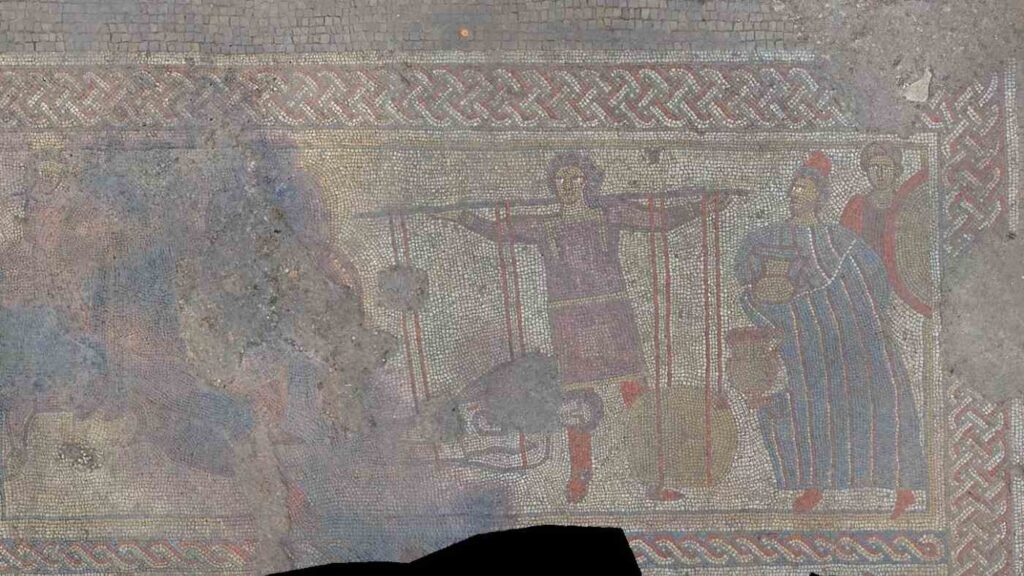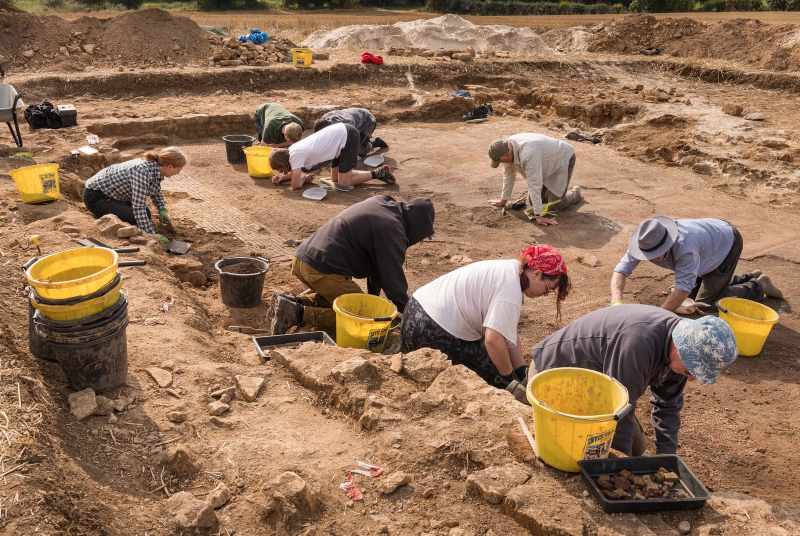
Archaeologists have unearthed the first Roman mosaic of its kind in the UK.
The initial discovery of the mosaic was made during the 2020 lockdown by Jim Irvine, son of landowner Brian Naylor, who contacted the local council archaeological team.
The remains of the mosaic measure 11 meters by almost 7 meters (36×23 feet) and depict part of the story of the Greek hero Achilles—to form the floor of what’s thought to be a large dining or entertaining area.
Mosaics were used in a variety of private and public buildings across the Roman Empire, and often featured famous figures from history and mythology.
However, the Rutland mosaic is unique in the UK in that it features Achilles and his battle with Hector at the conclusion of the Trojan War and is one of only a handful of examples from across Europe.
The room is part of a large villa building occupied in the late Roman period, between the third and fourth century AD.
The villa is also surrounded by a range of other buildings and features revealed by a geophysical survey and archaeological evaluation, including what appear to be aisled barns, circular structures, and a possible bath house—all within a series of boundary ditches.
The complex is likely to have been occupied by a wealthy individual with a knowledge of classical literature.
MORE: Surviving the Nazis and Fire, 2000-Year-old Caligula Mosaic Finally Returns to Museum
Fire damage and breaks in the mosaic suggest that the site was later re-used and re-purposed.
Other evidence uncovered includes the discovery of human remains within the rubble covering the mosaic.
These burials are thought to have been interred after the building was no longer occupied, and while their precise age is currently unknown, they are later than the mosaic but placed in a relationship to the villa building, suggesting a very late Roman or Early-Medieval date for the repurposing of this structure.
Their discovery gives an insight into how the site may have been used during this relatively poorly understood early post-Roman period of history.
A remarkable find
Evidence recovered from the site will be analyzed by ULAS at their University of Leicester base, and by specialists from Historic England and across the UK, including David Neal, the foremost expert on mosaic research in the country.

The villa complex was found within an arable field where the shallow archaeological remains had been disturbed by ploughing and other activities.
Duncan Wilson, Chief Executive of Historic England, said, “To have uncovered such a rare mosaic of this size, as well as a surrounding villa, is remarkable.”
“Discoveries like this are so important in helping us piece together our shared history. By protecting this site we are able to continue learning from it, and look forward to what future excavations may teach us about the people who lived there over 1,500 years ago.”
Jim Irvine, who first spotted signs of something fascinating beneath the earth on a ramble last year, said, “This archaeological discovery has filled most of my spare time over the last year. Between my normal job and this, it’s kept me very busy, and has been a fascinating journey. The last year has been a total thrill to have been involved with, and to work with the archaeologists and students at the site, and I can only imagine what will be unearthed next!”
(WATCH the video for this story below.)
Source: University of Leicester
UNEARTH This Story For Others; Share It on Social Media…



















